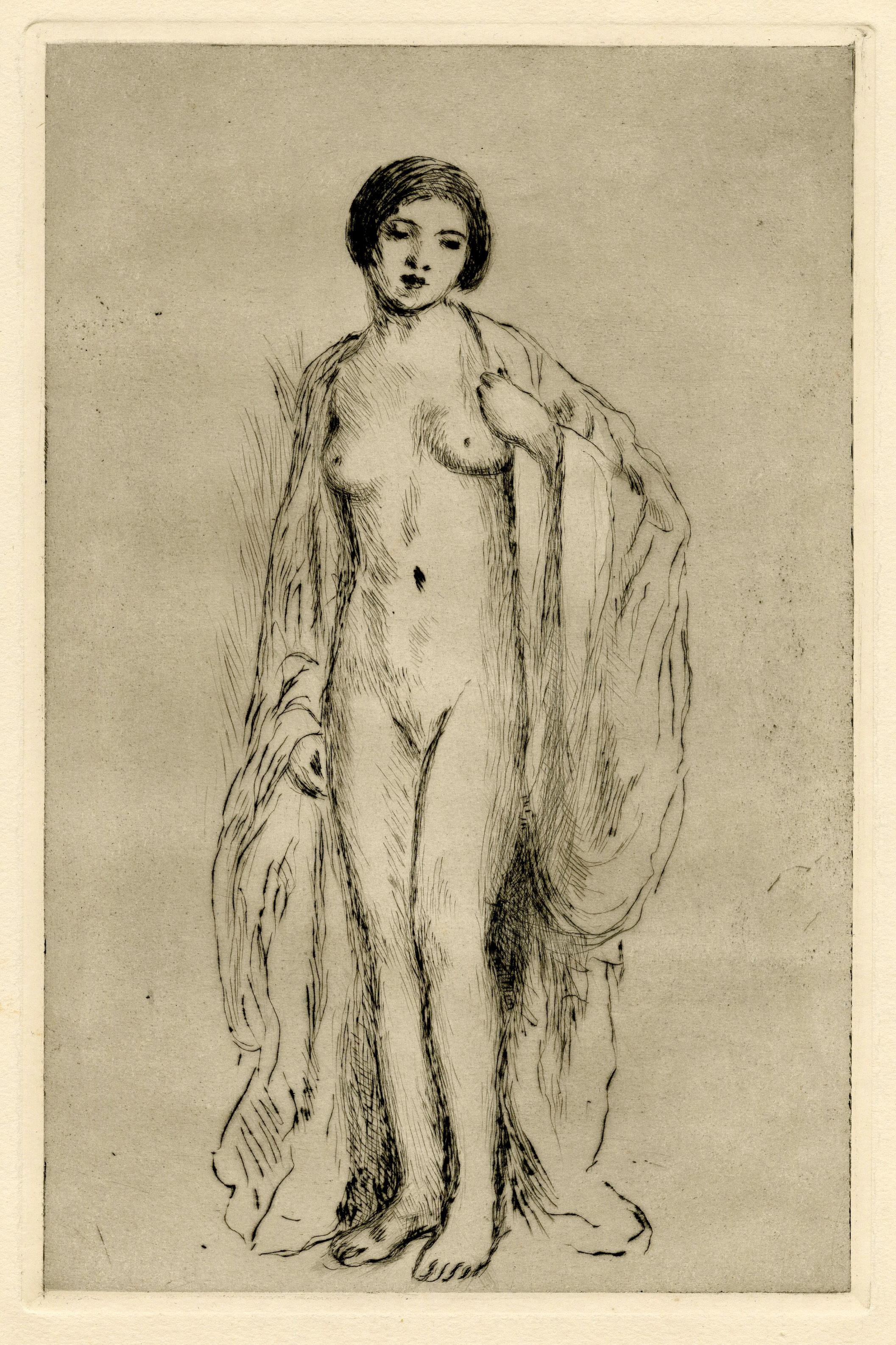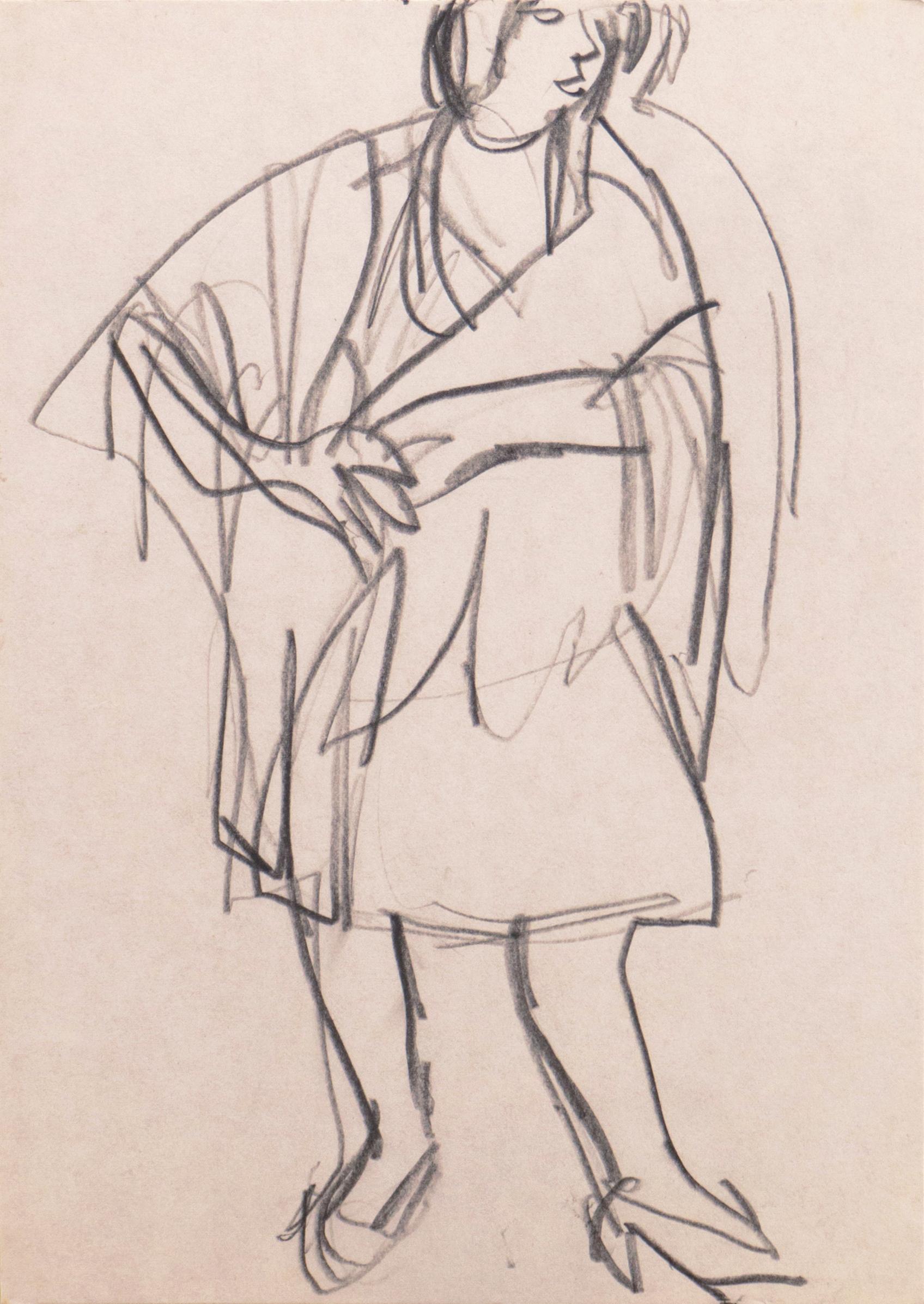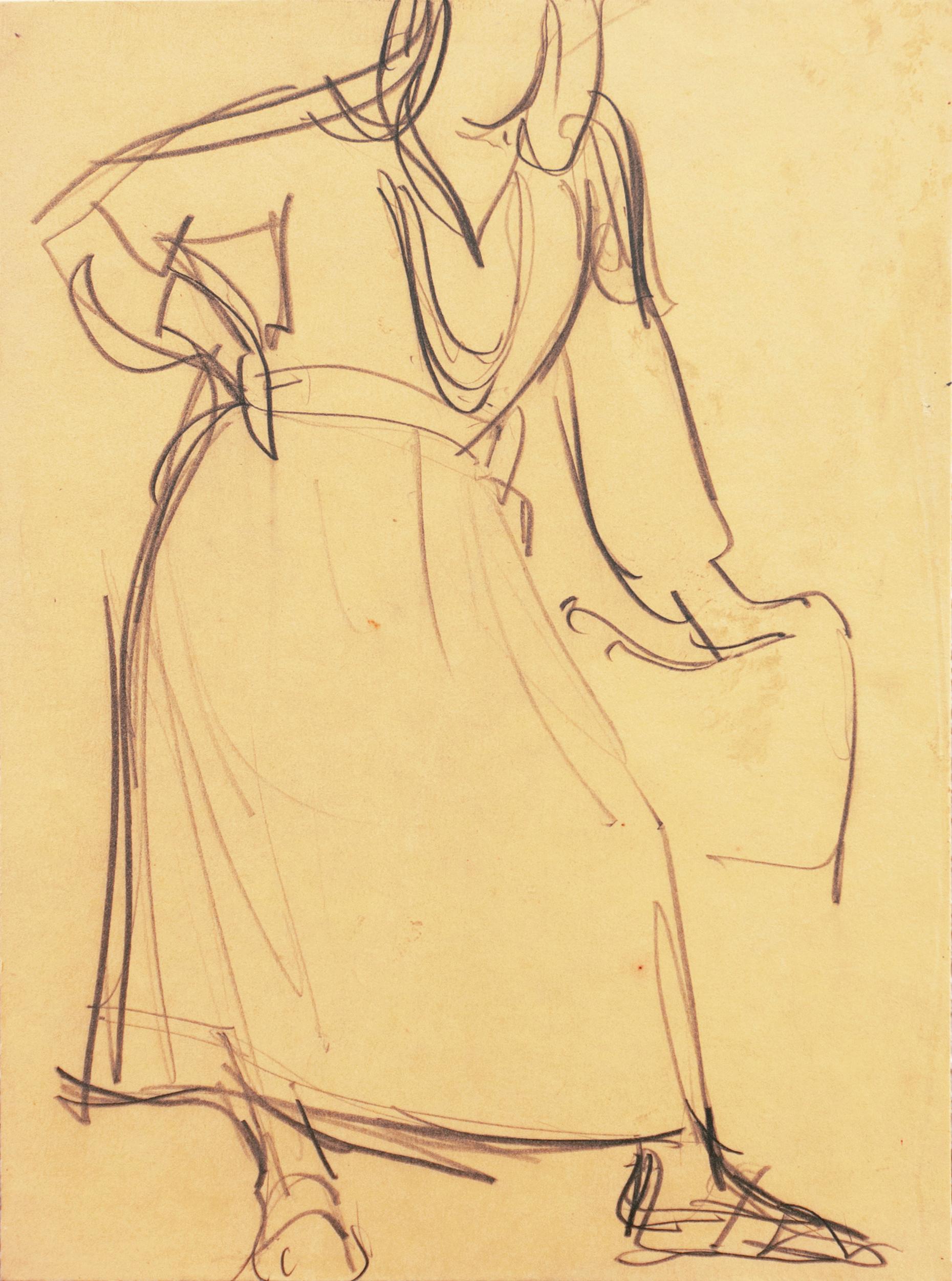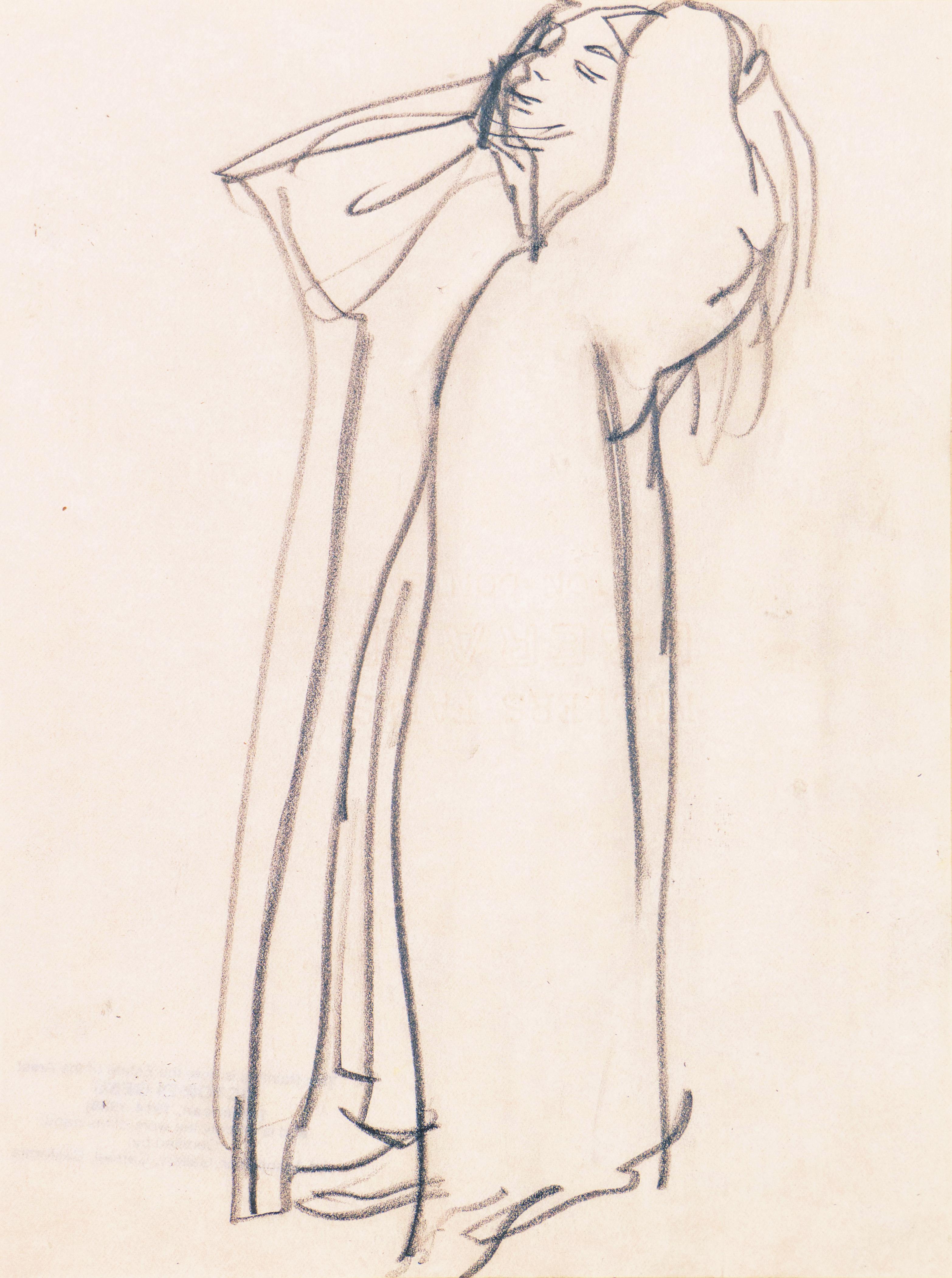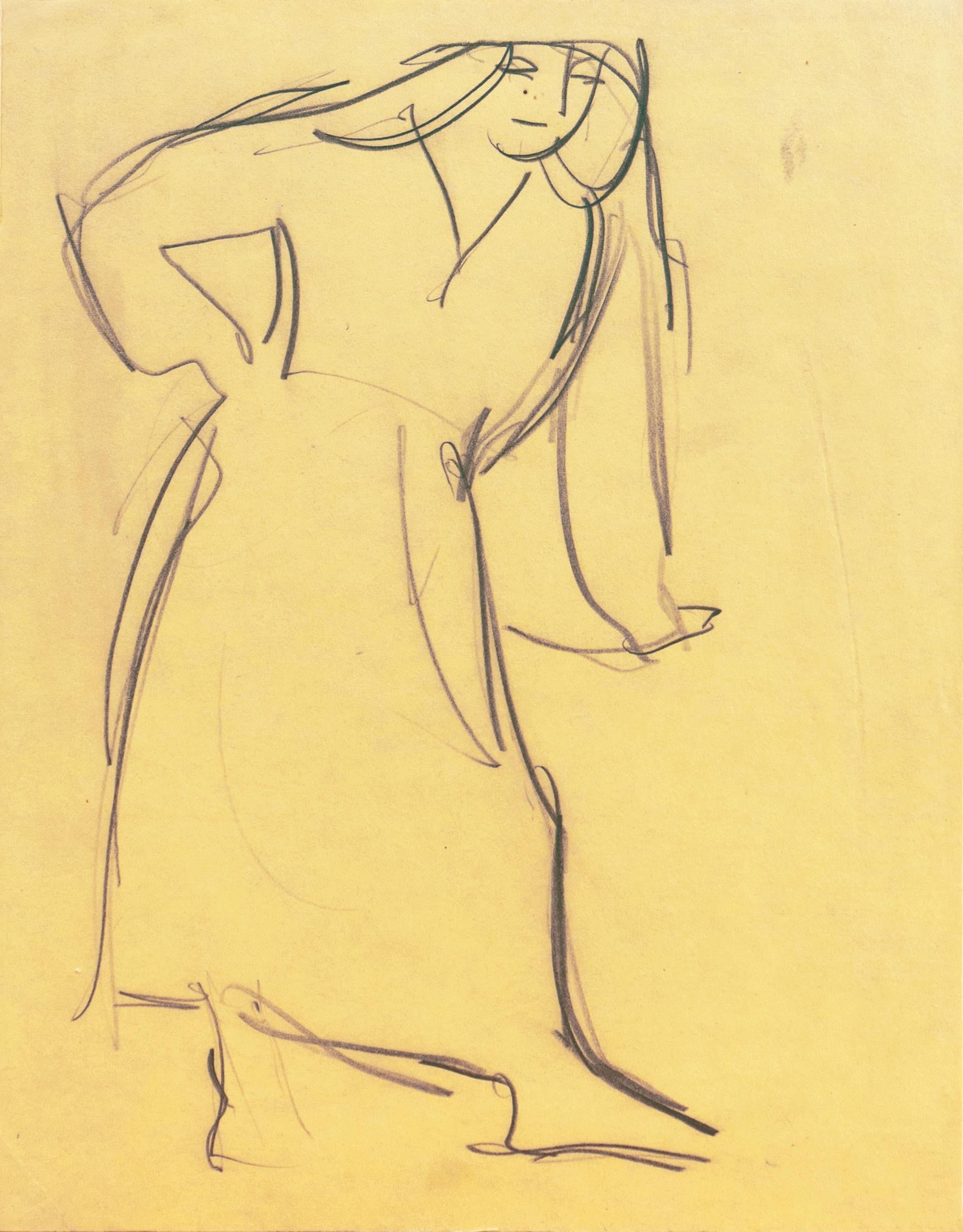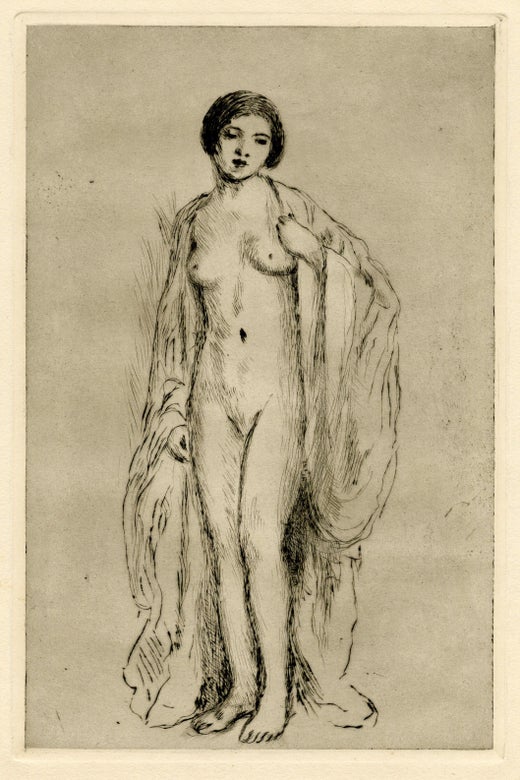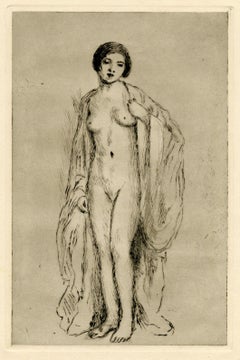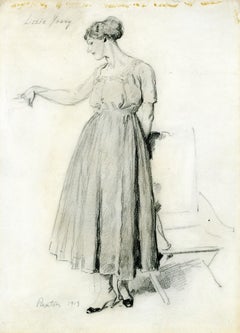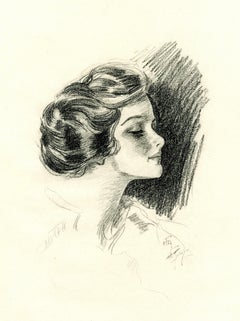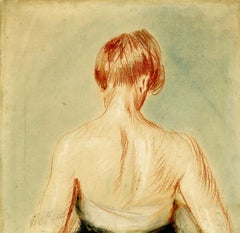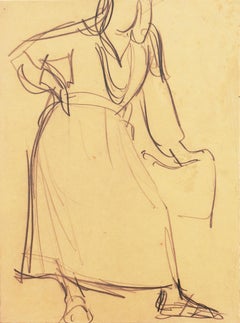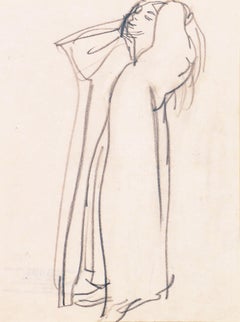Frederick Carl FriesekeStanding Woman in Profilec. 1900
c. 1900
About the Item
- Creator:Frederick Carl Frieseke (1874-1939, American)
- Creation Year:c. 1900
- Dimensions:Height: 10.5 in (26.67 cm)Width: 4.63 in (11.77 cm)
- Medium:
- Movement & Style:
- Period:
- Condition:
- Gallery Location:Fairlawn, OH
- Reference Number:Seller: FA126631stDibs: LU14016535542
Frederick Carl Frieseke
Frederick Carl Frieseke studied at the Chicago School of Fine Arts from 1884, and at the Art Students League, New York. In 1888, he went to the Académie Julian in Paris, where he worked under Benjamin-Constant and Jean-Paul Laurens, also receiving advice from Whistler. In Paris, he also became acquainted with the work of contemporary artists, particularly Fantin-Latour and Renoir, and discovered Giverny, which he visited frequently during the summer months. In 1906, having achieved a degree of financial and artistic success, Frieseke was able to buy Théodore Robinson's former house in Giverny, which was next door to Monet's. In 1919, he moved to the Normandy village, Le Mesnil-sur-Blangy, where, after a brief return to the United States in 1937, he died.
Frieseke primarily painted female figures and nudes, such as Woman with a Mirror, Young Girl Playing the Piano or Model in Front of a Screen, gradually progressing to intimate scenes of women and, like Renoir, voluptuous nudes posed in the open air, their bodies lit by sunlight filtered through foliage. His methods ranged from a strictly Impressionist technique of separate brushstrokes, to one approaching divisionism, as in Mrs. Whitman's Garden of about 1912, to a broader application of color, as in Ladies in a Boat in Giverny of 1910. At times, he even went beyond Impressionism to a manner inspired by Fauvism, heightening the colors – mauves, blues and pinks – to “exaggerate the effect.” At the same time, Frieseke was also concerned, like Degas, with traditional figure painting, despite often setting them in an Impressionist-style landscape, as in Hollyhocks of 1912–13.
Frieseke took part in many group exhibitions in Paris, including the Salon des Artistes Français and the Société Nationale des Beaux-Arts, of which he became an associate member in 1901 and a permanent member in 1907. He held a solo show at the Venice Biennale in 1909, followed by another in Rome in 1911, and a show in New York in 1912. He received a number of distinctions: 1909, a gold medal at the Munich International Exhibition; 1913, the Temple Prize from the Pennsylvania Academy of the Fine Arts, Philadelphia; 1915, the Grand Prix at the Panama-Pacific International Exhibition, San Francisco; 1915, a gold medal at the Philadelphia Art Club; and was made a Chevalier de la Légion d'Honneur.
Find original Frederick Carl Frieseke paintings on 1stDibs.
(Biography provided by Leighton Fine Art Ltd.)
- ShippingRetrieving quote...Shipping from: Akron, OH
- Return Policy
More From This Seller
View All1910s American Impressionist Nude Prints
Drypoint
1910s American Impressionist Figurative Drawings and Watercolors
Graphite
1910s American Impressionist Drawings and Watercolor Paintings
Graphite
Early 1900s Impressionist Figurative Drawings and Watercolors
Charcoal
1980s American Realist Nude Drawings and Watercolors
Chalk
1890s American Impressionist Nude Drawings and Watercolors
Graphite
You May Also Like
1920s American Impressionist Figurative Paintings
Oil, Board
1950s Figurative Drawings and Watercolors
Paper, Graphite
1950s Figurative Drawings and Watercolors
Paper, Graphite
1950s Figurative Drawings and Watercolors
Paper, Graphite
1950s Figurative Drawings and Watercolors
Paper, Graphite
1890s Impressionist Portrait Drawings and Watercolors
Pencil, Chalk
